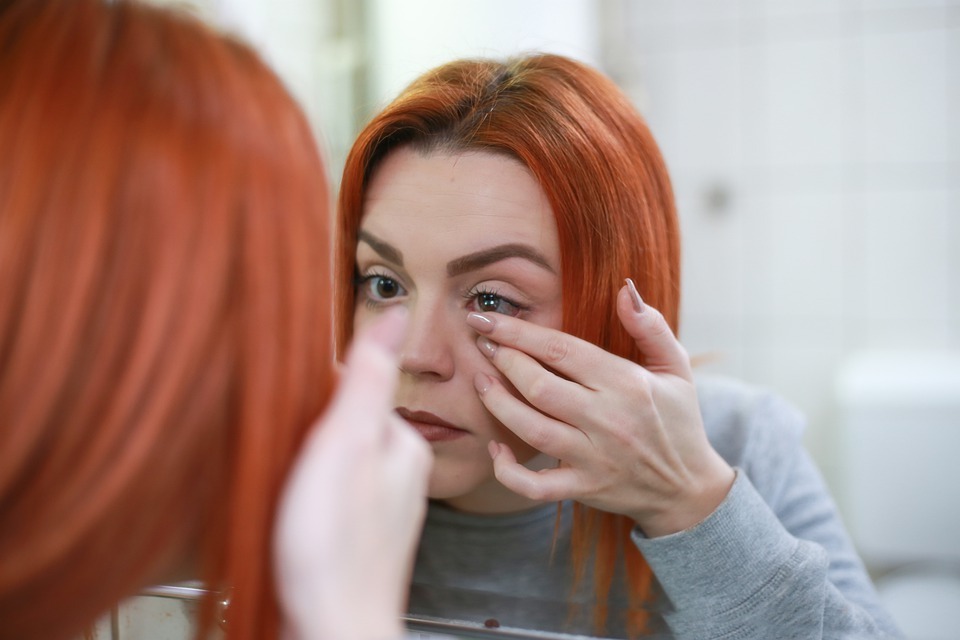There are several common mistakes contact lens wearers often make, which can lead to severe complications. According to eye health specialists at Feel Good Contacts (UK’s leading contact lens retailer), contact lens hygiene and eye care are essential if you wish to avoid eye infections and injuries. This article runs through common contact lens mistakes and how you can avoid them.
1. Sleeping in contact lenses
While some contact lenses are specifically designed and approved for overnight wear (extended or continuous), those who sleep in their contact lenses are more at risk of eye infections such as microbial keratitis and corneal ulcers. The enzymes that protect the surface of your eye need oxygen to fight off germs. Wearing your contact lenses for too long will reduce the amount of oxygen reaching your eye and cause your contact lenses to dry out.
If you must sleep in your contact lenses make sure you have been prescribed extended wear contact lenses only. You can learn more about these lenses and even purchase them online. You must have the approval of your optician to wear these lenses and you should have discussed the risks and benefits of sleeping in overnight lenses before proceeding. These lenses are made from silicone hydrogel, a breathable lens material that allows more oxygen and moisture to reach the eye. Some extended wear contact lenses are approved for up to 30 days of continuous wear. However, some eyes are not suitable for this type of lens and even if you are, regular checks of your eye health are crucial (as advised by your optician). If you decide to wear extended wear contact lenses, make sure to monitor your eye health each day and if you feel your lenses have accumulated dirt, make sure to remove and clean them effectively.
2. Handling contact lenses with dirty hand
Handling your contact lenses with dirty hands can transfer dirt and bacteria, which can lead to infection. Always wash your hands thoroughly with mild soap and dry them thoroughly with a lint-free towel before handling your lenses.
3. Swimming or showering with contact lenses
Microorganisms called acanthamoeba, bacteria and chemicals are often found in water which is why it’s best to avoid contact with all water (including tap water) while wearing contact lenses. This also applies to rinsing your contact lens case, you should never rinse it with water. Swimming or showering in contact lenses can lead to eye infections such as acanthamoeba keratitis.
4. Leaving lenses in for too long
There are different replacement and wearing schedules for contact lenses, and no matter which type of contact lenses you wear, you should not leave them in longer than prescribed and advised by your optician/eye care professional. It’s important to give your eyes time to breathe without the lenses in. Leaving in lenses for too long will cause a risk of dry eyes and infection as they can accumulate dirt and other build-up or get scratched and irritate your eyes.
Nevertheless, replacing lenses more frequently than instructed won’t cause you any harm. If you’re travelling and need to swap your lenses out to ensure you’re not wearing the same ones for longer than you should, this is highly recommended.
5. Keeping lenses past their expiration date
There is a reason for contact lens expiration dates, and therefore you should not keep your contact lenses past their expiry date. Following your optician’s advice along with the instructions listed on the packet of lenses is crucial to ensure you don’t harm your eyes or get eye infections such as conjunctivitis.
6. Not rubbing contact lenses when cleaning
Even if you’re using a ‘no rub’ contact lens solution, it’s always advised to rub the lens in the palm of your hand to give it an effective clean and remove germs and deposits. Contact lens care is critical, so make sure you always follow the advice of your optician and clean your contacts and contact lens case effectively using fresh solution.
7. Using old contact lens solution
Using old contact lens solution (expired or left in the case) and failing to change your solution daily is bad practice and can lead to infection. Never top old solution with new and never use tap water or water of any kind to clean , rinse, disinfect and store your lenses.
Any solution should be discarded after opening (usually within 90 days but varies depending on the manufacturer and solution type). Check the solution’s package leaflet for directions and contact your optician/eye care professional if you are unsure on how to use your prescribed contact lens solution.
8. Failing to change the contact lens case
It’s crucial to change your contact lens case at least every 3 months no matter what as bacteria and germs can build up in the case over time. Bacteria can produce a substance known as biofilm, which is not visible and hides bacteria from the disinfectant in your contact lens solution. You should also replace your contact lens case immediately if it is cracked or damaged in any way.
What is the most common complication of contact lens wear?
There are many complications of contact lens wear if they are not taken care of properly including a corneal ulcer that can cause total loss of vision in the affected eye if left untreated.

